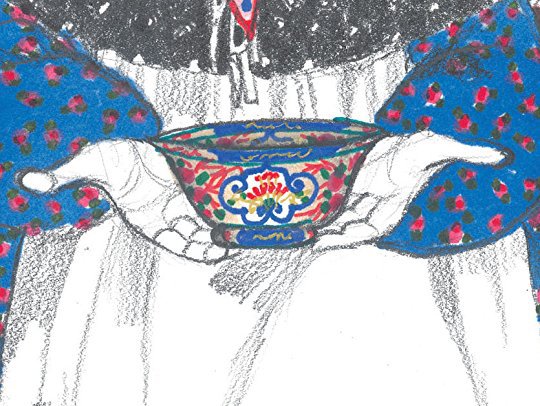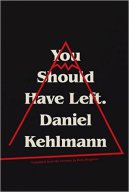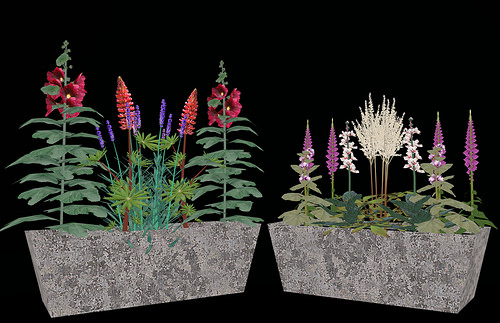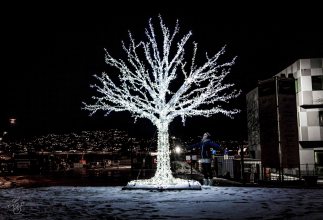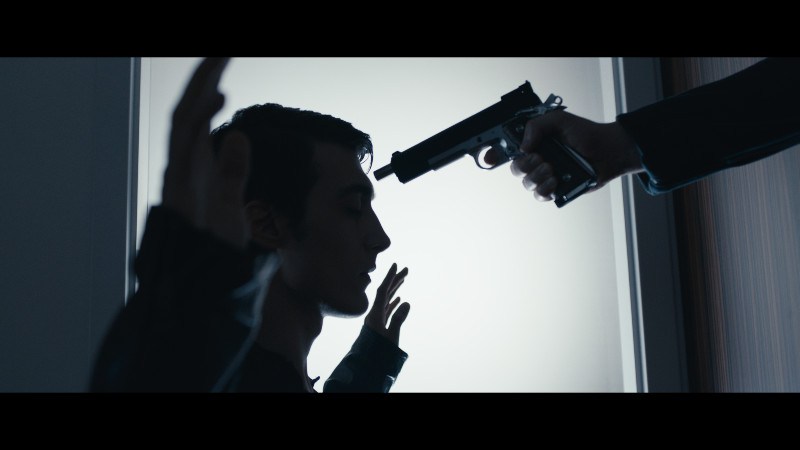The Pakistani Airlines flight made its final approach to the runway. I was in an aisle seat that didn’t afford a good glimpse of the pyramids. How ironic that my first trip from RCO Karachi would be Am Embassy Cairo, where my predecessor Charles A. had gotten on a plane, returned to SECSTATE, and resigned (the curse of the pharaohs?).
<feature photo by cairo_the-atenaeum.orgThe Egyptian immigration officials waved me through like Muslim matadors when I showed them my diplomatic passport. In the arrivals hall, a driver held up a placard with my name on it. He took my luggage and asked me to follow him to the embassy vehicle. Outside, he stowed the luggage in the trunk and me in the backseat of the large black American sedan (a Lincoln?).
I had done my homework. The American Embassy Cairo was located in Garden City, along the Nile River. The airport was in the east of the city, about twenty kilometers from the embassy. Cairo’s population exceeded six million. They wore colorful linen or white muslin with a few western dressed people sprinkled in against the beige canvas that included sand-colored buildings (except for the modern hotels). I suppose the buildings were the same color as the Giza pyramids along the Nile River to the southwest of the city. I noticed a beige haze over the city worse than L.A.’s smog.
The chatty driver was in no hurry. He spoke some English and wanted to learn more from me. I answered his questions. Yes, I was from near Los Angeles, California. No, I didn’t know if Jimmy Carter would win the election in a few weeks.
Hoards of mostly 1950’s cars, many American brands, surrounded us. Several taxis had custom electronic toy fixtures installed in there rear windows. I saw a miniature King Kong winking at a vehicle behind, signaling a right turn.
Fascinating.
We passed ancient mosques, wide avenues, and 19th-century palaces. Cairo is a huge, sprawling city built on plateaus, which makes it difficult for radio coverage. That’s why it’s been a thorn in RCO Robert Roberson’s derriere.
 City of the Dead-photo by pinterest.com
City of the Dead-photo by pinterest.com
The driver pointed out the City of the Dead, a huge dense, sprawling cemetery on uneven terrain. I think the driver was trying to tell me that people lived and worked there, or maybe that they stayed just to be with deceased relatives. It struck me as a never-ending slum, but nevertheless it appealed to some spiritual nature in me. I don’t know why.
Things began to look up as we turned onto what the driver called The Corniche, a road that skirted the Nile River. Vendors selling their produce hung watermelons split in half from trees along the thoroughfare that also featured palm trees.
The driver came up to the American Embassy that stood like Fort Apacho. A long single-story approximately twelve foot high wall separated the mission from the street with gates like wrought iron painted white. He stopped at the armed vehicle entry point while Egyptian guards checked the undercarriage of the vehicle with long rods with mirrors on the ends.
The American Embassy Cairo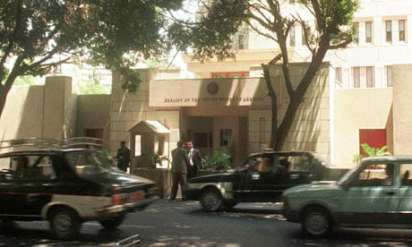 photo by the guardian.com
photo by the guardian.com
A closer look revealed that the embassy was more akin to one of the California missions founded by Father Junipero Serra in the 1800’s–call it Mission San Cairo De Nile.
No one met me inside the compound, but CRO Holman had given me directions for the sprawling fort.
In front of me were two office complexes that looked like they were made of adobe. Behind sat the chancery—the embassy offices with the ambassador. The chancery had the appearance of a church.
In his journal, Charles A. referred to the two-story rectangular complex with a walkway around each floor as “The Cage.” A thick metal screen had been installed on the inside of the walkway (to keep personnel from jumping?). It kept the floor enclosed from the Mexican-like hacienda open courtyard below.
I found the Communications & Records Unit, the CRU, on the top floor. Inside, I had never seen any room busier. The Teletype machines chattered, personnel nearly ran into each other crossing the narrow floor, and conversation rang at fever pitch. I immediately became an invisible object.
“Can I help you? You looked lost.”
An older fellow stared at me like I shouldn’t be there.
“I’m looking for CRO Holman. I’m a radio tech out of RCO Karachi.”
The guy turned his head and yelled over the noise, “Jeff, a radio tech from Karachi would like to speak to you.”
CRO Jeff Holman gave me a long look before he came over and introduced himself, shaking my hand. He had replaced Charlie’s nemesis, CRO Hayes.
Holman said, “We’ve got a crisis with the Ambassador’s vehicle. Ambassador Eilts is returning tonight. The radio has to work by then or…”
He chuckled before he added, “I’d get on a plane if I were you.”
A nice “Charlie A.” inspired welcome. “Do you have any place where I can put my stuff?”
“Where is it?”
“The driver left it out in the hallway.”
“Tom, would you help the radio tech get his stuff into the tech office where Bill hangs out. It’s next to the RSO office.”
“I’m pretty busy—”
“Help him out, okay Tom?”
Holman said to me, “Let’s meet for lunch at the café around noon.” He turned and headed back to what he was doing.
Tom steered me to the tech room and helped with my stuff. Then, “poof,” he disappeared before I could ask who to contact at the motor pool. I glanced at my watch. 10:00 a.m. I started to head to the MSG at the chancery when in walked a skinny youngish fellow.
Bill H., the crypto tech, said he had been assigned here about four months ago. He said he had looked at the ambassador’s vehicle yesterday but couldn’t determine what was wrong. He took me to the motor pool and left me with a rotund Egyptian man named Mahmood, the ambassador’s driver. I listened to Mahmood’s initial comical remarks transform into bellyaching for a minute before I had him pop the trunk.
I got out my test equipment.
The trunk-mounted antenna was broken. In technical terms the antenna exhibited high VSWR (Voltage Standing Wave Ratio), which minimized the radio signal transmission. I replaced the antenna. The VSWR was within limits.
Mahmood took me for a short ride around Garden City and down The Corniche. He stopped at different locales to make calls to the MSG guard at the chancery. I was surprised when the driver lost radio coverage soon before the area of Maadi where the USAID compound was located, about eight to ten miles from the embassy. The driver shook his head like the radio signal had never covered this far out.
Back at the embassy Mahmood was thrilled that the radio coverage was back to normal. I hurried and left before he asked me to come to dinner and meet and then marry his daughter (maybe I’m getting ahead of myself).
I returned to Bill’s tech office where a tall sandy-haired fellow blocked my way in the hallway. “Are you the tech from Karachi?”
“Yes I am.”
“Listen, you’ve got to get the radio in the ambassador’s vehicle fixed by this afternoon.”
Bewildered, I said, “Who are you?”
“Well, I’m RSO Childress,” he replied as if everyone in Cairo knew him.
RCO Roberson, my cohort Al, and Charles A. (through his journal) had all warned me about RSO Childress.
He didn’t bother to shake hands. “Okay,” I said, “The ambassador’s radio has been repaired and drive tested.”
“What about—”
“And the alarm package in the vehicle is functional. I made a test with the MSG at the chancery.”
“Oh, well then… Thanks.”
I didn’t know what else to say. I turned around to the sound of footsteps behind. Bill the crypto tech bounced along the hall, returning to his office. When I turned back RSO Childress had vanished.
In the hallway Charlie’s ghost echoed his lament through the tiger cage metal grid, “Welcome to Cairo, you poor S.O.B.”
Share this:
